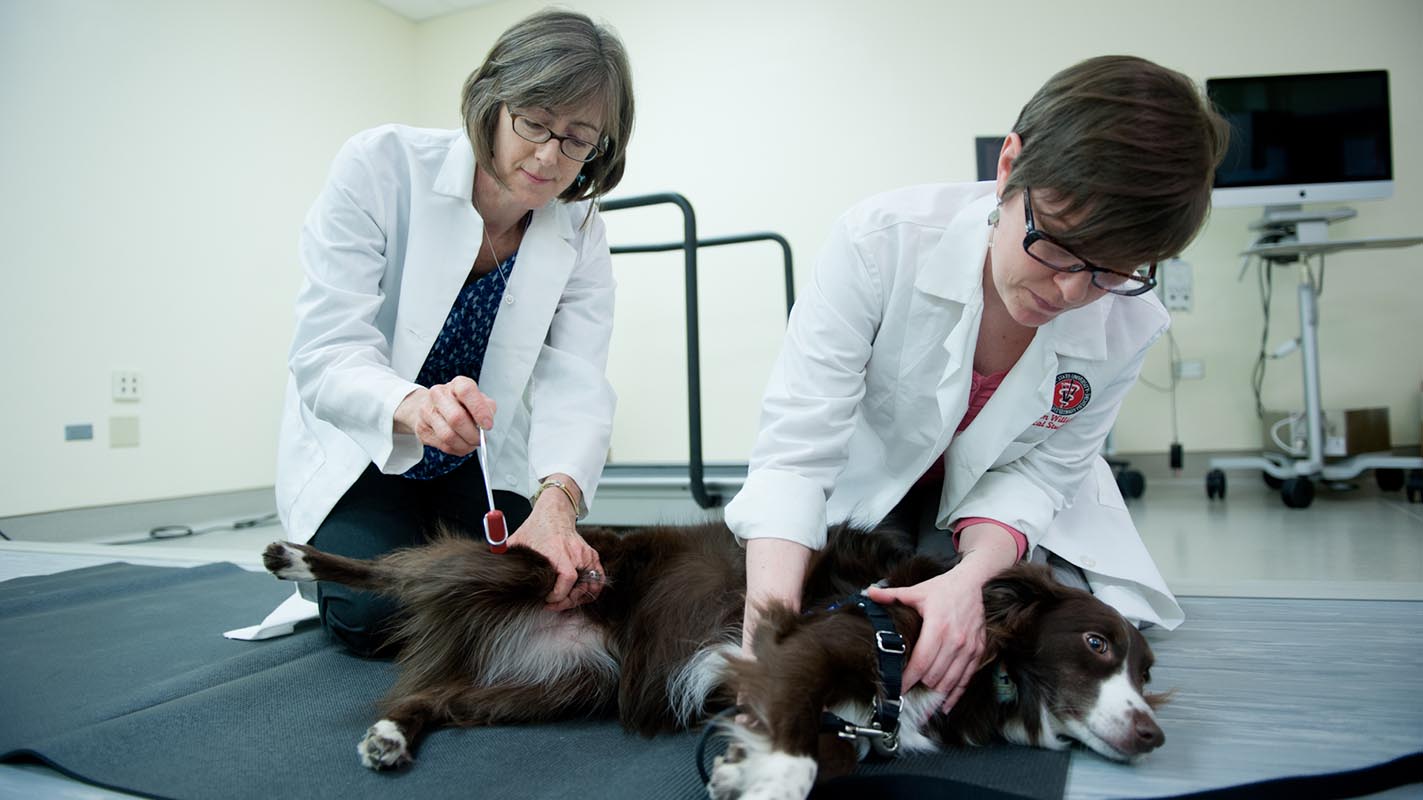Antibody Testing Reveals Dogs Can Suffer from Same Autoimmune Encephalitis as Humans

Researchers from North Carolina State University have found that dogs can suffer from the same type of autoimmune encephalitis that people do. The finding could lead to better screening methods for diagnosis and possibly more effective treatments for canine encephalitis.
Autoimmune encephalitis – an immune system reaction against the brain – is common in dogs, with smaller breeds and young adult dogs being most susceptible. The disease is not only challenging to treat, but veterinary neurologists have been unable to differentiate between the large numbers of non-infectious cases, referring to them as “meningoencephalitis of unknown etiology.”
“When we diagnose encephalitis based on MRI and spinal tap, we run infectious disease testing. If we rule out infection (which accounts for only a small portion of these cases), we are left with a diagnosis of meningoencephalitis of unknown etiology. This is an umbrella term for autoimmune encephalitis and we treat these dogs with immunosuppression,” says Natasha Olby, professor of veterinary neurology and neurosurgery at NC State and corresponding author of a paper describing the work.
“In reality, there are likely to be many different forms of autoimmune encephalitis in which the immune system is reacting to different targets within the brain. Currently we are unable to distinguish these in the living patient. While we treat all the cases with immunosuppression, better categorization of the different forms of encephalitis might enable us to predict prognosis better and fine-tune treatment for different diseases.”
Understanding of human autoimmune encephalitis has changed dramatically following the discovery of antibodies to different surface proteins on neurons in people with encephalitis. The most common of these diseases is NMDA receptor encephalitis (NMDARE), in which there are antibodies to the excitatory NMDA receptor. Many more of these surface protein targets have been identified, each associated with a different form of autoimmune encephalitis.
Olby and the NC State research team used a test that screened for antibodies against six different neuronal surface targets known to be involved with autoimmune encephalitis in humans on cerebrospinal fluid (CSF) from dogs with encephalitis. Human and canine genes for these targets are nearly identical, so a human test works effectively for dogs.
“The test contains cells that express the human target proteins at high levels and if there are antibodies to these targets in the CSF, they will bind to the cells and we can visualize them with a fluorescent tag,” Olby says.
The researchers screened CSF banked from 32 dogs with neurological disease – both inflammatory and non-inflammatory. Nineteen of the dogs had been diagnosed with inflammatory disease. Of the 19, three were positive for antibodies to the NMDAR target. All three of those dogs had responded well to immunosuppressive therapy.
“Being able to show that dogs suffer from a specific autoimmune encephalitis is really a paradigm shift,” Olby says. “But what causes this immune response is a slightly different question. We haven’t found a trigger, but our findings suggest that dogs and humans suffer from the same condition.
“While treatment options will remain the same, we can now look for more antibody targets and perhaps be able to change the diagnosis from ‘unknown etiology’ to a diagnosis by neuronal cell surface target. Being able to categorize the disease more accurately may give both dogs and humans more options for treatments in the future.”
The work appears in the Journal of Veterinary Internal Medicine. Former NC State veterinary pharmacy resident Emma Stafford is first author.
~ Tracey Peake/NC State News Services


